Results 611 to 620 of 12096
Thread: Anandtech News
-
07-12-11, 10:10 PM #611
Anandtech: Motorola Xoom Gets Honeycomb 3.2 And Hints Of LTE
Two bits of news broke today regarding Honeycomb's first flagship device, the Motorola Xoom. The FCC has gotten their hands on the LTE module bound for Verizon customers' Xooms. With the FCC's seal of approval out of the way it should be no time before customers are alerted of the opportunity to send their Xooms in for the update. WiFi Xoom owners also have something to look forward to as updates are going out to small batches of devices with the latest release from the Android labs.
It was just 3 weeks ago that we first caught wind of a new point advance of Google's tablet operating system, Honeycomb. At the time the news was packed into a press release by Huawei announcing their 7-inch MediaPad, and espousing the device's status as the first 7-inch Android 3.2 tablet. Huawei's representatives at the time said that this latest iteration was simply optimized for the 7-inch form factor, though it has to include one other major update to Honeycomb: a new platform.
All of the Honeycomb tablets we've seen so far have been, for better or worse, Tegra 2 powered. The MediaPad, however, is powered by a Qualcomm Snapdragon SoC and this would suggest that 3.2 will finally bring Honeycomb to that platform, which should make our tablet performance charts more interesting. Reports suggested that other bug fixes and some performance improvements would be coming with the release; expect to see a few 3.1 vs 3.2 comparisons sooner rather than later. And though it seems to be targeted at 7-inch devices the release was said to be hitting Motorola's Xoom in short order.
Yesterday, on the Android Developer Blog we were introduced to another feature that we would be seeing in 3.2; Screen Compatibility Mode. Despite Google's best efforts to educate their developers, at events like I/O, many applications with layouts optimized for small screens have trouble scaling their UI elements when used on tablets. Google is offering an alternative that should be familiar to early users of the iPad. When using an app that is neither optimized for Honeycomb nor extra large screens, a softbutton will be available in the status bar that provides two options. In 'Stretch' mode the app would be displayed at the devices native pixel density; this is the current implementation and can lead to undersized buttons and UI elements. In 'Zoom' mode the app is rendered at approximately 320 x 480 and then scaled to fit the larger screen. The trade-off for properly sized UI elements is a more pixelated experience, and while the iPad's implementation suffers no performance deficit from the scaling it's unclear yet whether Honeycomb devices will pay a performance penalty.
All questions will be answered soon though, as Xoom owners are seeing the 3.2 update pushed to their devices. We don't know yet what, if any, performance improvements have made it to the release, but owners will be pleased to discover that their long dormant SD card is now fully functional. Updates seem to be going out in small batches, mirroring the 3.1 release just a few months ago, so if you're reading this on your Xoom, give us a shout when you get it in. Meanwhile, the rest of us will wait with bated breath for the coming wave of 7" Honeycomb tablets, and for updates to be pushed to the rest of the flock of Android slates.
More...
-
07-12-11, 11:00 PM #612
Anandtech: HP Touchpad 4G Coming to AT&T
It's with some surprise that we were introduced today to the new HP TouchPad. No, not the one we're currently reviewing. HP is adding another SKU to its roster of WebOS slates, currently numbering one; and their bringing more than just HSPA+ with the HP TouchPad 4G. Clockspeed has been bumped from 1.2 Ghz to 1.5 Ghz on the updated slate, which could help with the sluggishness some early adopters may have noted. Speed is the only change though, the device still sports 32 GB of storage and a 1024x768 9.7" screen. Weight is up a few grams and battery life is down a bit; no surprises given the new radio and 25% clock increase.
The device will be available through AT&T Business Services and major retailers, pricing and release date remain a mystery, however. Why HP would push a spec update to its brand new tablet is also a bit of a mystery? The note about the device being sold through AT&T's enterprise sales division is a big clue, though. It's likely this is part of HP's efforts to push the TouchPad as an enterprise tablet, much like RIM's efforts with the PlayBook. Execs are far more likely to pay a premium for a more refined experience and expanded featureset than your average consumer. Either way, we'll update as we know more, and keep your eyes peeled for our TouchPad review soon.
More...
-
07-14-11, 04:21 AM #613
Anandtech: Novatel Wireless MiFi 4510L Review - The Best 4G LTE WiFi Hotspot?
A while back we explored almost all of Verizon’s 4G LTE network launch hardware - two USB modems, the Samsung SCH-LC11 hotspot, and the HTC Thunderbolt, to be exact. Since then, one more WiFi hotspot product has launched which we’ve been playing with for a long time, the MiFi 4510L from Novatel Wireless. The SCH-LC11 was a decent hotspot but still didn’t quite have all the features I wanted.
Is the MiFi 4510L the 4G LTE hotspot that we’ve been waiting for? Read on for our full review and find out.
More...
-
07-14-11, 10:10 AM #614
Anandtech: Fusion E-350 Review: ASUS E35M1-I Deluxe, ECS HDC-I and Zotac FUSION350-A-
Despite what you could buy many years ago for more than a thousand dollars, you can now get the same performance in a motherboard/CPU combo for under $200. But at present, with your dual core 1.6 GHz chip, there's WiFi, SATA 6 Gbps, somewhat capable onboard graphics, DDR3 support and potentially USB 3.0. Today, we're entering the realm of Hudson-M1: the Fusion E-350 domain. For this review we look at three very different mini-ITX Fusion E-350 boards on the market, from the expensive but completely passive ASUS E35M1-I Deluxe, the cheaper but still jam packed ECS HDC-I, and the SO-DIMM equipped Zotac FUSION350-A-E.
More...
-
07-14-11, 11:10 PM #615
Anandtech: Details on AMD Bulldozer: Opterons to Feature Configurable TDP
AMD’s new Bulldozer-based CPUs are just around the corner. AMD has said the release of Zambezi CPUs will happen in Q3, which starts in less than 24 hours so we could expect the release as soon as in a few weeks. We know quite a lot about these CPUs already but there is at least one thing we didn't know until now and it may end up being a big thing in server market. AMD’s John Fruehe has published an interesting blog post where he reveals that AMD’s upcoming server CPUs, Operons, will feature a user-configurable TDP. Read on for our overview on Bulldozer, thoughts on configurable TDP, and summary of AMD's future plans.
More...
-
07-15-11, 07:20 PM #616
Anandtech: This Just In - Motorola Droid 3 for Verizon
Almost a month ago, we posted about the Motorola Droid 3 popping up in GLBenchmark 2.0's online result browser, with a dual-core 1 GHz OMAP 4430 SoC at its core. Since then, Motorola made the Droid 3 official, announcing online availability for July 7, and in-store availability July 14 for the pretty standard $199.99 on a two year contract. We waited patiently and sure enough a Motorola Droid 3 hit our doorstep today, which we'll have a full review on sometime before the week is up. Until then, we're going to go over high level things in our usual This Just In format.
We're still running all our benchmarks, but for the time being have scores for the web suite, GLBenchmark 2.0, and RightWare's Basemark ES2.0. We now have independent confirmation that those previous Droid 3 results from the GLBench online result browser weren't crazy, in fact, Egypt has gone up slightly.
The Droid 3 is a world-branded phone, and thus includes a dual-mode baseband. If you've been following some of Motorola's other devices closely, it shouldn't come as a surprise that Qualcomm's MDM6600 baseband is inside the Droid 3.
There's the standard CDMA2000 1x/EVDO Rev.A 800 / 1900 MHz connectivity for Verizon and some roaming on other CDMA carriers, alongside GSM/UMTS 850 / 900 / 1800 / 1900 support for roaming abroad. There's 2.4 GHz 802.11n support, though no 5 GHz love for 802.11an.
The Droid 3 comes running the very latest version of Gingerbread out right now, 2.3.4. It's a breath of fresh air to play with something that isn't launching running 2.2 Froyo for a change. The device is also running the new brand of Motoblur Motorola's UI skin, which includes a new lock screen and some eye candy on the application launcher and home screens. I'm still making my mind up about how this compares to the previous brand of Motoblur that comes with the Droid X2.Motorola Droid 3 - Network Support CDMA2000 1xRTT/EVDO Rev.A 800 / 1900 MHz GSM/EDGE 850 / 900 / 1800 / 1900 MHz WCDMA/UMTS 850 / 1900 / 2100 HSPA Speed HSDPA 10.2/14.4 (UE Cat. 9/10), HSUPA 5.76 Qualcomm MDM6600
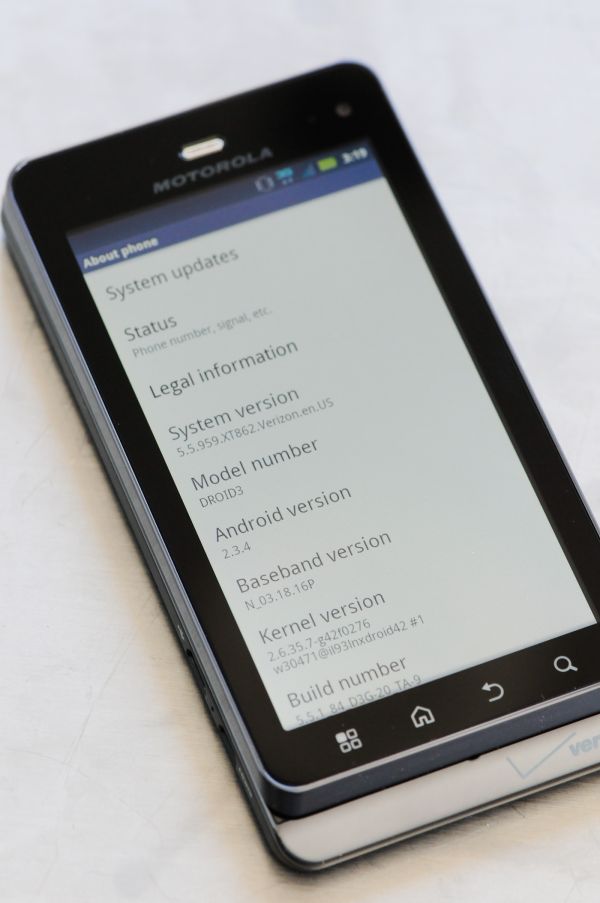
The other big change is of course the new five-row QWERTY keyboard, which thus far is honestly spectacular. I picked up the Droid 3 and immediately was speeding along comfortably. The domes are convex, very clicky, and provide great haptic feedback. I have to admit that I initially questioned the wisdom of dedicating an entire row to 0-9, but I completely understand how helpful this is after entering my 20 character WPA PSK and getting the Droid 3 on my WiFi network. Moreover, it provides a nice buffer so fingers and long nails don't hit the bottom of the slider. The slide mechanism still isn't spring loaded or on a particularly smooth rail, however.
{gallery 1238}
The device is also 0.8 mm thinner than the Droid 1 and 2, and it's surprising how much that actually translates to a device that feels like it hasn't put on weight just because it has a keyboard. Check out the gallery for some shots of the sides and all around.
The Droid 3 curiously comes without a microSD card, instead going with 16 GB of internal storage. I was a bit confused at first, but sure enough there's no microSD card mentioned on the box.
There's an 8 MP rear facing camera with LED flash. It's down to one LED instead of two with the Droid 3, but it looks like the LED has an improved fresnel lens atop it, and no doubt more power output. There's also a VGA front facing camera.
The device can capture 1080p30 video at 15 Mbps with stereo audio. I'm not passing judgment quite yet, but things in the lightbox look a bit undersaturated, but there's great high frequency spatial detail. Check out the gallery for some quick pictures I took with the rear facing camera.
{gallery 1239} Stay tuned for our full review!
More...
-
07-15-11, 11:20 PM #617
Anandtech: Zotac, and a Z68 E-ATX with almost everything?
The Zotac "Crown Edition-ZT-Z68 U1DU3" is a Z68 motherboard in the Extended ATX (E-ATX, 330x305 mm) format. At that size, you know from the start that it will only fit a select number of cases. But in an attempt to woo gamers, enthusiasts and overclockers, Zotac have piled it all on the details:
- a 26-phase design (24 for the CPU), with driver-MOSFETs, solid chokes, high-C and super ML capacitors,
- 802.11n onboard Wifi mini-PCIe Card (as well as gigabit Ethernet),
- an NF200 chip to support 32 PCIe lanes for a 16x/0x/16x/0x or 8x/8x/8x/8x GPU configuration,
- two onboard USB 3.0 headers offering four ports (as well as two on the back),
- three BIOS chips for backup BIOSes (not sure how this fits in with Gigabyte's DualBIOS patent),
- a legacy IDE port, and a mSATA port for an SSD,
- quad-SLI support,
- voltage read points
Over recent months, Zotac has been that niche company for the mini-ITX form factor. If you wanted mini-ITX, chances are Zotac would have a board. Along the same lines, Zotac are also known for trying to shove everything onto a board, regardless of power consumption or price. So when I got wind that Zotac were going extreme-full size, I had to take a look to report on what they would be offering.
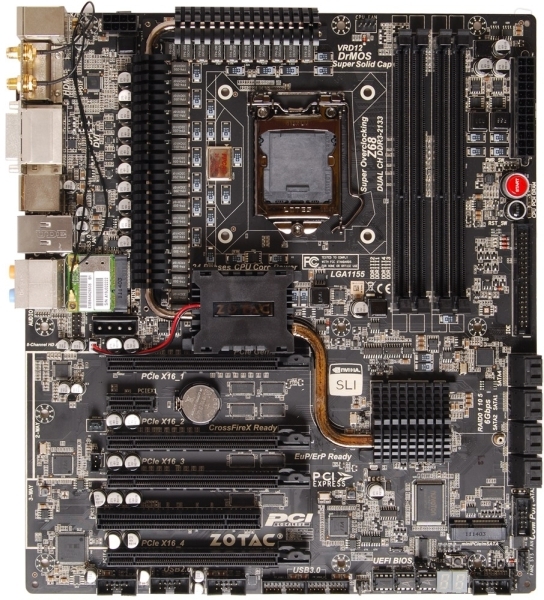
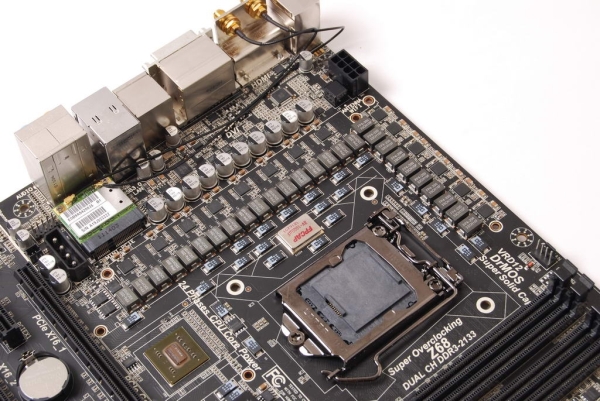
Important points to note are - how are the 24 CPU power phases managed? There's only one 8-pin 12V connector, yet usually on these type of boards (c.f. Gigabyte X58A-UD9) we see two. Is there a switch to disable the NF200 due to the 2-3% performance loss expected if only one or two GPUs are used? Sure, the board will support quad-SLI, but the fact that the 2nd PCIe only has a 1-slot width will hamper overclockers? How much is all this going to cost? Is it any good?
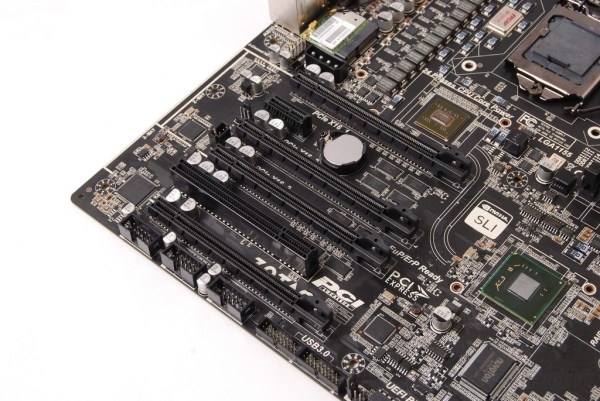
In my experience, Zotac hardware usually works within specifications, as you would expect. What can be dissapointing though is BIOS support, and software utilities. If this board wants some stellar results, Zotac has to nail down those areas solid, otherwise it could fall on its face very fast - assuming that there is actually a market for such a product.
{gallery 1241}
As always, no mention of pricing or availability yet. As soon as I get more information from Zotac about this board, I will let you know.
More...
-
07-17-11, 06:40 PM #618
Anandtech: gScreen SpaceBook: Back to the Future with Dual Screens?
gScreen has released two SpaceBook-branded laptops that sport dual 17.3” 1080p monitors. That makes SpaceBook the laptop with the most real screen estate with over four million pixels. gScreen has achieved dual screens by making them sliding - the other screen will slide behind the other one to maintain a regular laptop form factor. The slide effect also allows SpaceBook to be used as a normal one-screen laptop.
{gallery 1244}gScreen SpaceBook specifications SpaceBook 17 i5 4G SpaceBook 17 i7 8G Screen size 2x 17.3" 2x 17.3" Resolution 2x 1920x1080 2x 1920x1080 Processor Intel Core i5-560M (2.66GHz dual core) Intel Core i7-740QM (1.73GHz quad core) Graphics NVIDIA GeForce GTS 250M 1GB NVIDIA GeForce GTS 250M 1GB RAM 4GB DDR3 1333MHz 8GB DDR3 1333MHz Hard drive 500GB 7200rpm 500GB 7200rpm Optical drive Super-Multi DVD drive Super-Multi DVD drive Wireless 802.11 b/g/n 802.11 b/g/n Connections Headphone jack, mic-in, Ethernet, 3x USB 2.0, eSATA+USB, FireWire, HDMI, memory card slot Headphone jack, mic-in, Ethernet, 3x USB 2.0, eSATA+USB, FireWire, HDMI, memory card slot Dimensions (WxHxD) 16.5" x 1.9" x 12.6 16.5" x 1.9" x 12.6 Weight 10lb 10lb Price $2395 $2795
For a quick history lesson, gScreen was founded in 2003 and has solely concentrated on dual-screen laptops. They first revealed their plans in 2009 and originally SpaceBook was supposed to come out in early 2010, but it was delayed. However, after more than a year, gScreen is now taking pre-orders. They also seem to have some kind of promotion regarding to the pricing so the prices listed above are the original prices, not discounted ones.
Frankly, the specifications are straight from early 2010 as well. There is no Sandy Bridge, only Arrandale and Clarksfield, both of which are 18 months old (or more) by now. As for the graphics, gScreen offers NVIDIA GeForce GTS 250M with 1GB of VRAM (no word on the type, though DDR3 is likely) in both models and this GPU is roughly two years old. gScreen doesn’t even offer any BTO options so these are the only options you have; no Blu-Ray, SSDs, or anything like that (although you should be able to install them on your own). There is also no word on the panel type, only that they have LED backlighting. Given the high price and gScreen's aim at professional market, IPS displays would be a nice addition, but with outdated CPU and graphics, a TN panel seems inevitable.
gScreen doesn’t say anything about the battery life, only that it's a 6-cell, but considering that we are talking about Arrandale and especially Clarksfield with no GPU switching, the battery life can’t be too good. The second screen will also draw extra power so battery life is very likely less than 90 minutes. Considering the presumed bad battery life and the fact that SpaceBook is a 10-pound monster, portability really becomes a moot point. You lose a lot of portability if you need to be plugged in all the time and the weight of SpaceBook means that it won't be your "everyday and everwhere" kind of laptop.
Given the above, we have to ask: exactly what is the market for the SpaceBook? gScreen claims that they focus on filmmakers, photographers, designers and CAD engineers. However, who would pay over $2000 for a laptop with very out dated hardware and use it as a work machine? If you work with video or other intensive content, then you are going to want the fastest machine you can find, or at least a computer that offers good performance for the buck. Gamers won’t even take a look at machine like this considering its hefty price tag and relatively poor specs. Engineers likewise wouldn't even think about outdated hardware with no professional GPU features (e.g. Quadro or FireGL).
The only market for SpaceBook that I can see is people who really, really need a lot of screen estate while on the go and are ready to trade performance and portability (and a nice amount of $) for those features. That doesn't seem like a big market and it’s hard to see SpaceBook becoming a blockbuster. $1200 can easily get you a laptop with a quad-core Sandy Bridge CPU, decent GPU, and 1080p screen. That’s much more powerful and portable than SpaceBook while costing half as much. With the leftover money, you can grab two big desktop LCDs (even IPS panels!) and get more screen estate than SpaceBook, and still saving money. The only thing you miss out on there is transportability.
All in all, SpaceBook is an interesting concept but it isn't enough to justify the out dated hardware and high price. With 2011 hardware and some configurable options, it could potentially satisfy a niche market, but in its current state SpaceBook looks quite obsolete. We're curious, though: are any of our readers more forgiving of the design? Let us know.
More...
-
07-17-11, 10:20 PM #619
Anandtech: The HP TouchPad Review: webOS on the Big Screen
If this were a race of numbers, Apple would have already won. It isn't. The iPad 2, as successful as it is, isn't perfect. There's tons of room for innovation and we're seeing its competitors offer clear examples of that innovation. As with any market, the lower your market share the more likely you are as a company to take risks. After all, you've got nothing to lose. It's in breaking the mold and taking these risks that great ideas are often born.
For HP there wasn't much of a risk to take with their first entry into the new tablet market, thanks to Palm's risk taking three years ago. For those who have used a webOS phone in the past, the OS needed very little functional improvement. It was just a matter of needing better hardware, squashing bugs and improving performance. The fundamentals were sound.
In fact, I'm still surprised that no one has managed to really copy the things that made webOS so great given how much time has passed since the Palm Pre first went on sale. Even today with multitasking improvements in Honeycomb and iOS, it's still easier to launch, exit and switch between apps on webOS.
Has HP been able to give webOS the rest of the ingredients it needs to succeed? Read on for our full review of the HP TouchPad.
More...
-
07-17-11, 10:20 PM #620
Anandtech: The Summer of Honeycomb, Part 2: Win an ASUS Eee Pad Transformer
Want to know if you're the winner of our first Summer of Honeycomb giveaway? Congrats to AnandTech reader jdobratz for winning our first Eee Pad Transformer. Be sure to respond to my email to claim your prize! If you didn't win last week, don't worry - there are still three more chances to win!
We've got three tablets left and this round we're giving away our second Eee Pad Transformer! Read on for details on how to enter!
More...
Thread Information
Users Browsing this Thread
There are currently 35 users browsing this thread. (0 members and 35 guests)







 Quote
Quote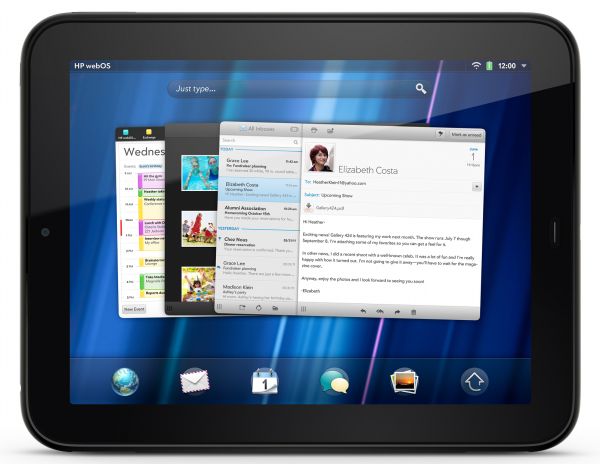


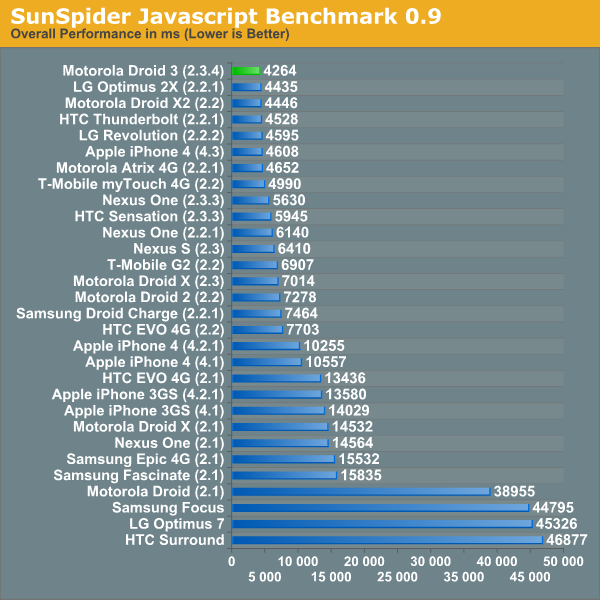

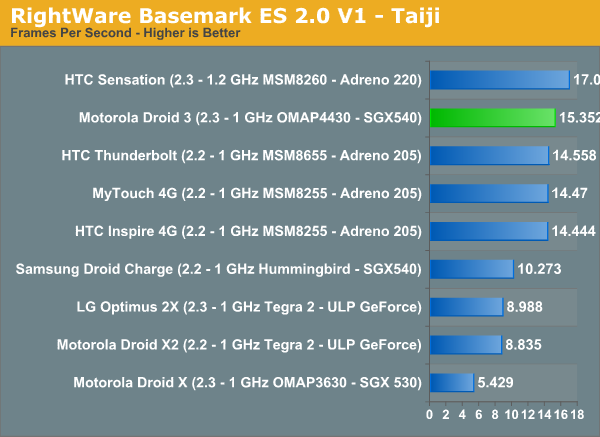
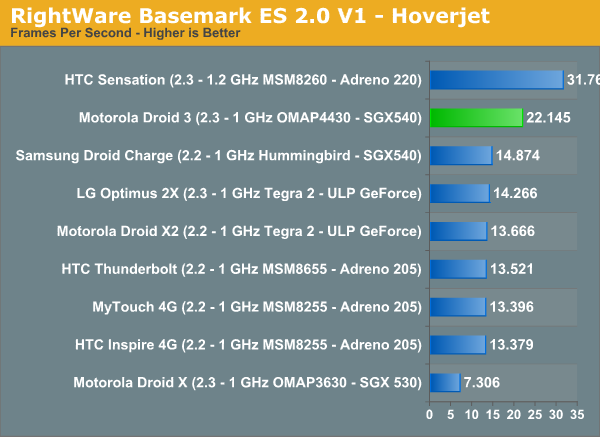
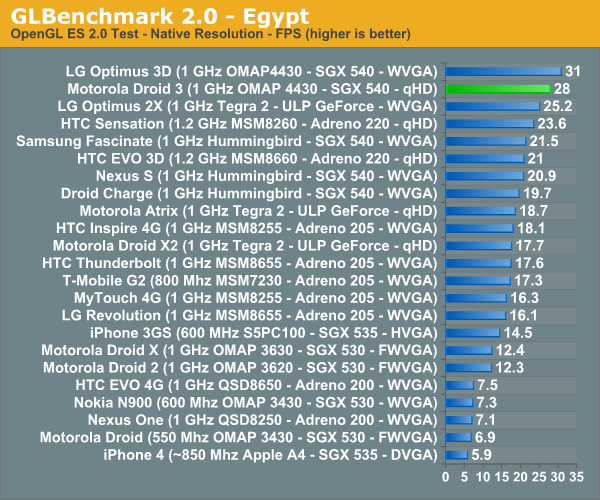
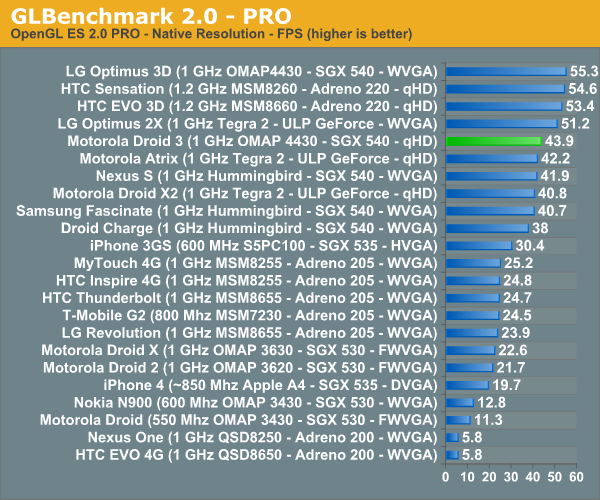
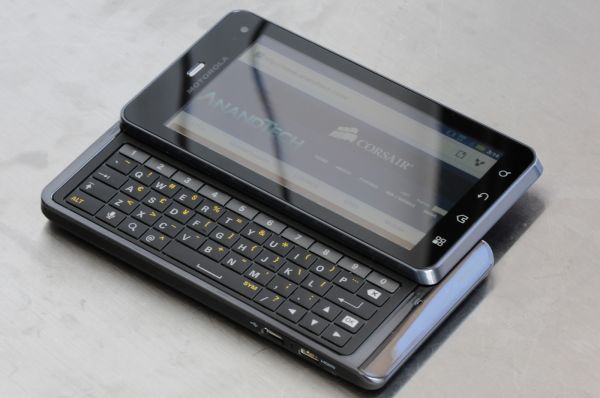
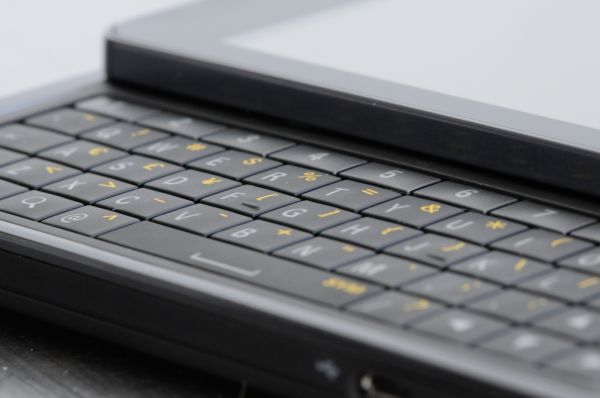
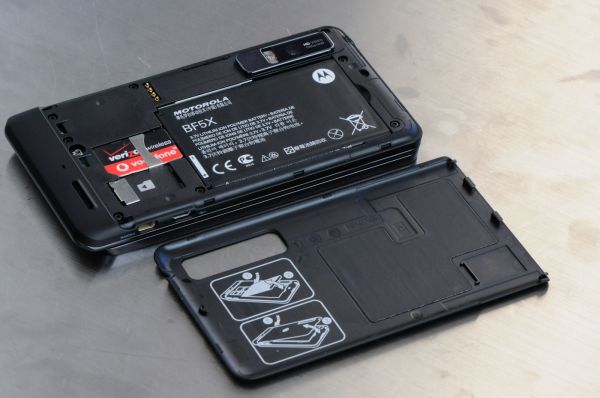

















Bookmarks